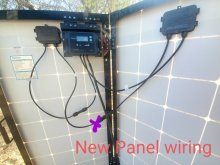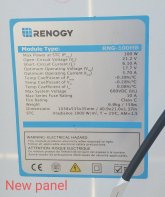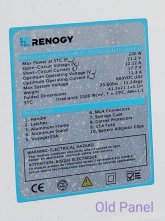Jayne
New Member
- Joined
- Mar 2, 2021
- Messages
- 14
Hi there! I have a very simple Renogy 200w (2-panel/100w ea) Eclipse suitcase set-up that I pull out to charge the house batteries in my van as needed.
One of the100w panels got smashed, so I ordered a new 100w Eclipse panel and figured I'd just document how everything was wired and swap it out. Easy-peasy!
Except now that I have the new one attached and everything wired, I'm getting a P02 "solar overvoltage" warning. I can't figure out what I might have done wrong and I haven't found much info on solar overvoltage errors online.
I'm attaching pics of the old panel info, new panel info, old set-up's wiring and the wiring with the new panel.
Please help! I have pretty much no idea what I'm doing. I assume I did something simple incorrectly? Thank you.
One of the100w panels got smashed, so I ordered a new 100w Eclipse panel and figured I'd just document how everything was wired and swap it out. Easy-peasy!
Except now that I have the new one attached and everything wired, I'm getting a P02 "solar overvoltage" warning. I can't figure out what I might have done wrong and I haven't found much info on solar overvoltage errors online.
I'm attaching pics of the old panel info, new panel info, old set-up's wiring and the wiring with the new panel.
Please help! I have pretty much no idea what I'm doing. I assume I did something simple incorrectly? Thank you.








